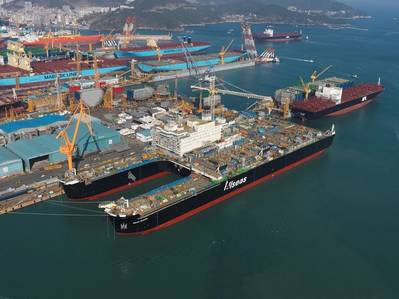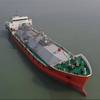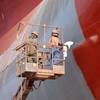Chloropac Anti-Fouling Selected for Largest Decommissioning Vessel
Allseas Group S.A., a global offshore pipe installation and subsea construction company, has selected Evoqua Water Technologies’ Chloropac electrochlorination system to protect onboard cooling water for Pieter Schelte, the world’s largest decommissioning and pipe laying vessel.
The Chloropac system will protect the 382-meter long, 124-meter wide vessel’s onboard piping and equipment from marine fouling, which occurs when sea water is used in onboard processes such as a ship’s cooling systems and air conditioning.
Currently being built in South Korea, Pieter Schelte has been uniquely designed for the single-lift installation and removal of large offshore oil and gas platforms, with a unique lifting system that allows it to lift entire platform topsides up to a maximum weight of 48,000 ton. It is also able to carry out high capacity pipelay operations and will replace Allseas’ Solitaire as the largest pipe laying vessel in the world. The Chloropac system will be in operation on Pieter Schelte once construction of the vessel is fully complete in 2015.The concentric tubular electrodes (CTE) technology used in the Chloropac system generates sodium hypochlorite from the natural salinity in seawater, which eliminates the need to purchase biocides and store or replenish them on board. The Chloropac system has low energy requirements and maintenance costs due to the self-cleaning feature of the CTE technology that eliminates the need for acid washes or periodic cleaning of the system, which ensures long-term performance and lower lifecycle costs with minimal operator intervention. Chloropac systems have been proven in more than 2,500 installations worldwide over the past 35 years.
In addition, the natural reaction the Chloropac system uses to produce low levels of sodium hypochlorite in the vessel’s water system allows treated water to revert back to seawater naturally on its return to sea, providing users with an environmentally enhanced solution.
“The Chloropac system offers a long-term, proven method to effectively prevent marine and biological fouling without the associated maintenance of other processes. Its installation on some of the largest industrial vessels in the world, such as Pieter Schelte, further proves its capabilities,” said Paul Watkins, Evoqua marine sales manager.
evoqua.com











